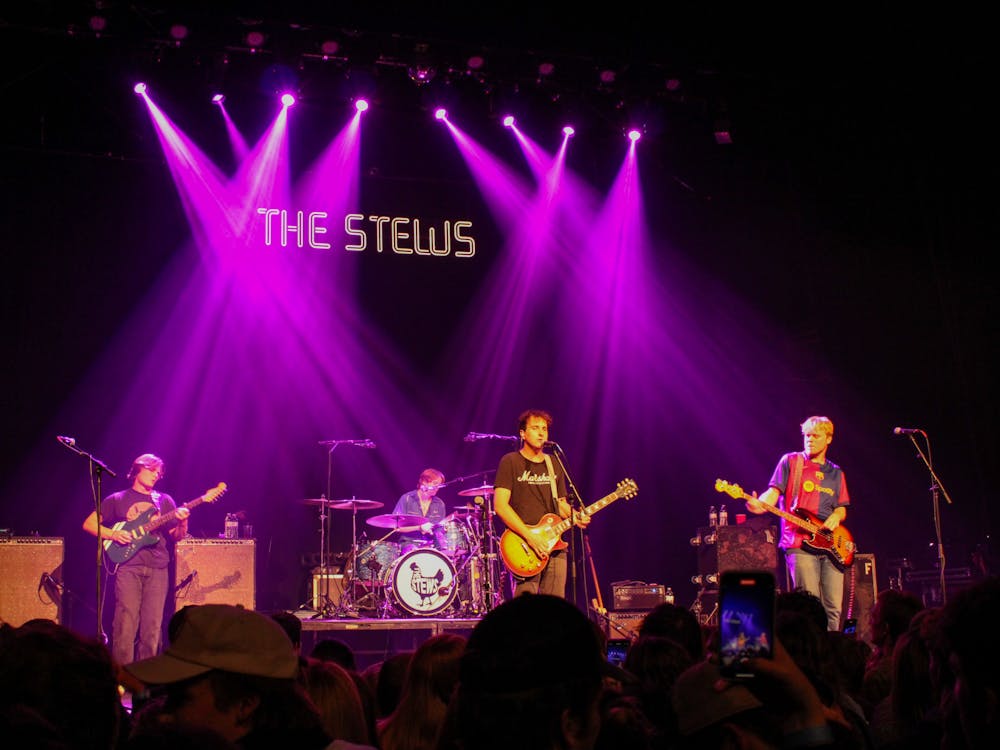Imagine sitting in a movie theater back in 2013 and having a giant robot fist crash through the screen. That was “Pacific Rim,” a sci-fi action movie about giant robots tasked with fighting giant monsters — tacky and senseless, but regardless the kind of hard-hitting and unique spectacle that one can’t help but marvel at. But the new sequel, “Pacific Rim Uprising,” is the kind of lame follow-up that can only sit in the first film’s giant robot shadow.
Ten years have passed since the end of the Kaiju War, and though great strides have been made toward recovery, humanity remains wary of another invasion by the Kaiju — city-destroying beasts from another dimension. To that end, Jake Pentecost (John Boyega) — wastrel son of war hero Stacker Pentecost from the first film — is forcibly recruited to train a young class of cadets to pilot Jaegers, giant humanoid robots built to kill the Kaiju. With the help of scrappy new recruit Amara Namani (Cailee Spaeny) and his abrasive colleague Nate Lambert (Scott Eastwood), Jake prepares for new threats that soon prove to be closer on the horizon than any of them could have anticipated.
As a sequel, “Uprising” is very efficient, trusting the audience to remember the world-building accomplished in the first film so that the film can move forward into its own story. The stakes are easier to grasp, and the characters are very clear about their feelings and motivations. Compared to the first movie, “Uprising” is much sleeker and cleaner, like a sports car, but somebody taped a brick to the accelerator — the plot feels extremely rushed, blazing through an abundance of important points and character development.
A lot of the movie is carried by the performances — John Boyega makes for an extremely charming lead,Spaeny is fierce and her fellow cadets are nicely expressive. But their charisma can’t hide how blatantly incomplete each character is, how underwritten the film’s backstories are and how unprompted the character development is. Most of the cast is simply redundant — Scott Eastwood in particular doesn’t seem to have much to do besides being the subject of other people’s conversations — to say nothing of his even more extraneous girlfriend.
Not helping the already tenuous plot is the obnoxiously immature writing. The film peppers in jokes and visual gags seemingly at random, going beyond light-heartedness and into the territory of self-satirizing action spoof. While admittedly funny, the humor feels like spackle — like the film isn’t confident in holding the audience’s attention without a wacky gag every five minutes. By the midpoint, the humor only serves to repeatedly drain any kind of tension the film could have, and somehow grows even more annoying from there onwards.
Aesthetically, “Uprising” is a completely different film from “Pacific Rim,” which housed itself in Director Guillermo del Toro’s signature style with rich colors, grimy designs and messy production. “Uprising” is a lot less visually cluttered, with a much more sober color palette and a softer sci-fi edge — the dark mechanical elements of Jaegers are played down in favor of bright holograms. On the one hand, this approach is much less immediately visually interesting, but on the other, it does provide a clearer frame for more dynamic action opportunities. “Uprising” rarely takes advantage of its clearer frame though and is often reminiscent of action scenes from other sci-fi action films simply scaled upwards. There is a difference between a giant robot fight and a normal fight done with giant robots, and “Uprising” is more often than not the latter. It lacks a sense of scale of the weight of its immense beings clashing on screen. The action scenes lack internal logic and never seem to build to anything — not terrible, but always lacking in some way.
That’s really the biggest issue with “Uprising,” how lacking in identity it is. Yes, it’s more functional than the first film, but it has no flavor, nothing that stands out like the gloriously cheesy moments of “Pacific Rim.” The very act of getting into a Jaeger in the first film had a sense of ceremony — a sense that “Uprising” has none of. “Uprising” seems to take influence from a bizarre mash of giant robot anime, high school coming-of-age dramas, superhero films and other American productions based on Japanese intellectual property — most notably the recent “Power Rangers” film. To return to the original analogy, if “Pacific Rim” was like a giant robot fist, then “Pacific Rim Uprising” is like the theater being flooded with a swarm of vacuum cleaners — a collection of functional but annoying and redundant elements, none of which can hold your interest, and all of which, quite frankly, suck.





